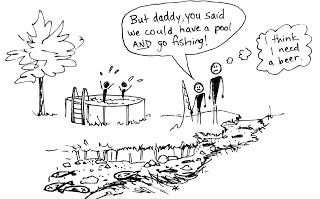

| Online: | |
| Visits: | |
| Stories: |

| Story Views | |
| Now: | |
| Last Hour: | |
| Last 24 Hours: | |
| Total: | |
WaterSmarts: Water in the environment
Read aguanomics http://www.aguanomics.com/ for the world’s best analysis of the politics and economics of water
Sorry for the long delay in getting this analysis out, but the topic is certainly not stale.
I tell people that (1) we’d all die if we took no water from the environment but also that (2) all water abstractions have a detrimental impact on the environment.
With those thoughts in mind, I asked people using the WaterSmarts Calendar for their answers to these questions on the November 2015 activity:
Question: Where does the water come from near your house? (Find your “watershed” on a map. This webpage doesn’t load very well — hover over the colored squares to find continents — but it works!)
- What is the largest river in your watershed?
- How much water does it carry over the course of the year?
- Where does the water come from and go to?
- How much is diverted on the way?
- Comments/notes?
Here are the answers:
- Rio Grande (USA)
- ~1 million acre feet (1,233 MCM)
- Mountain snowpack to the ocean
- All of it
- River Erne (Northern Ireland)
- 102 cubic metres per second (3,216 MCM)
- Catchment area rises in the area around Cavan town and runs north through Fermanagh, through Upper and Lowe Lough Erne and to the sea at Ballyshannon
- 115 ML/day (42 MCM year)
- We live in the wettest county in the UK, it is also one of the most sparsely populated and least industrialised counties in the UK. So water scarcity is not currently a problem. Agricultural runoff, external fertilisers and cattle manure from cattle sheds, is the major water quality problem. “Deployable Output is the measure of available water and it is the sustainable abstraction based on the most severe drought in recorded history. Recorded history is defined as the longest set of meteorological records in Northern Ireland which is from 1853 to present.” See this and this pdf for more information.
- Rio Bogota (Colombia)
- Average 27 m3/s (851 MCM)
- It’s born in a mountain (3,000 m) near Bogotá and flows into the bigest Colombian river at 150 km from Bogota
- It is used to feed another two small water utilites and in agriculture
- Although Rio Bogotá is the largest river it is not the principal waster source to Bogota water utiliy that needs 16 m/s. Of that 13 m/s comes from reservoir (dams) which are fed by small rivers.
Bottom Line No river is unique and most rivers are dramatically affected by human interventions.
Lasst chance! If you’ve learned anything about water in the past year (who hasn’t?), then please fill in this form.
Source: http://www.aguanomics.com/2016/03/watersmarts-water-in-environment.html



